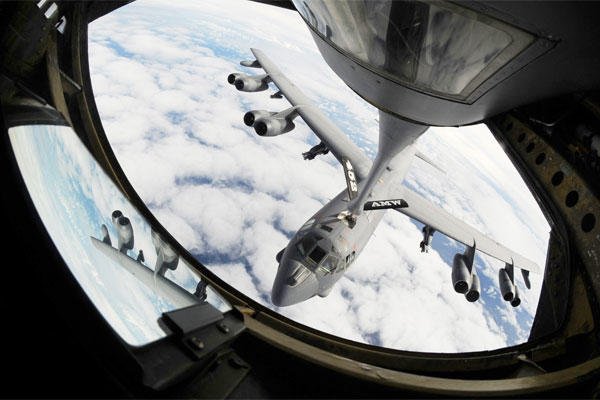The Air Force plans to increase the number of airmen and aircraft it will rotate through Australia as part of the U.S. military's Pacific Pivot and increased presence in Australia.
President Obama announced in 2011 on his trip to Australia the U.S. plan to deploy 2,500 Marines on 6-month rotations to the port city of Darwin. The president explained that it would serve as a stepping stone toward increasing the U.S. military's partnership with Australia.
The expansion of relations will not rest solely with the Marine Corps. The commander of Pacific Air Forces said the Air Force plans to increase its number of rotations through Australia -- specifically in Tindal and Darwin -- starting next year.
Gen. Herbert "Hawk" Carlisle said in a meeting with reporters on July 29 that the Air Force plans to rotate fighter and tanker aircraft through Australia. He also said the service is open to discussing the possibility of establishing a long term bomber rotation as well.
Air Force aircraft commonly take part in training exercises in Australia, and Carlisle's comments signal an interest in expanding that partnership further. The service recently took part in Talisman Saber -- an exercise that takes part every two years with U.S. and Australian units.
The Air Force has recently landed a bomber from Andersen Air Force Base, Guam, in Darwin before having it fly back to Guam. Carlisle didn't specify what type of bomber, but the Air Force has B-52s stationed at Guam.
Carlisle said the Air Force has considered rotating a number of units into Australia to include ones based in the continental U.S. He said he could foresee the F-16s based at Misawa Air Base and the F-15s at Kadena Air Base in Japan as potential units that could soon execute rotations through Australia.
The Air Force will have to invest money into infrastructure in Darwin and Tindal in order to improve ramp space, Carlisle said.
"We have put some equipment down there. So I think over the next year you'll see it's kind of on a gradual climb," Carlisle said. "Over the next year you'll see it climb a bit and then it would start again based on budgets to increase again in 2015."




























